Comprehensive Case Study: ISO 45001 Implementation for Saudi Arabian Vehicle Rental Leader

In today’s competitive fleet management sector, operational safety has become both a regulatory requirement and a strategic differentiator. This case study examines how PopularCert’s structured approach to ISO 45001 implementation transformed the occupational health and safety (OH&S) systems for a prominent vehicle rental company operating across Saudi Arabia.
The 4-month engagement showcases how systematic safety management can reduce workplace risks while creating tangible business value.
Client Profile
The client operates:
- One of Saudi Arabia’s largest independent vehicle rental fleets and they have 2000+ vehicles in their fleet
- Multiple maintenance facilities across the Kingdom
- 50+ workshop staff handling complex repairs
- Mixed workforce of technicians and support personnel
Like many growing operators in this sector, they faced increasing pressure to:
- Meet evolving Saudi labour regulations
- Reduce insurance premiums through better risk management
- Qualify for government and corporate contracts requiring international safety certification
Pre-Implementation Challenges
Our initial diagnostic assessment revealed several systemic gaps common in the vehicle rental industry:
Risk Management Deficiencies
- No formal hazard identification process
- Reactive approach to incident management
- Critical workshop activities (welding, paintwork, electrical repairs) lacked documented safety protocols
- Inconsistent risk controls across locations
Documentation Gaps
- Policies not aligned with ISO 45001 requirements
- No centralized record-keeping system
- Incomplete maintenance logs and incident reports
- Disconnected emergency response plans
Cultural Barriers
- Low safety awareness among frontline staff
- PPE compliance below 40% in workshop observations
- No clear safety accountability structure
- Limited management visibility into OH&S performance
Types Of Certification
- ISO Certification
- ISO 9001 Certification
- ISO 14001 Certification
- ISO 45001 Certification
- ISO 22000 Certification
- ISO 27001 Certification
- ISO 17025 Certification
- ISO 13485 Certification
- ISO 20000-1 Certification
- ISO 22301 Certification
- ISO 50001 Certification
- ISO 37001 Certification
- IATF 16949 Certification
- ISO 29001 Certification
- ISO 31000 Certification
- ISO 20121 Certification
- ISO 10002 Certification
- ISO 41001 Certification
Get Free Consultation
Our Clients


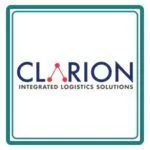
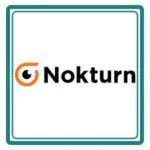


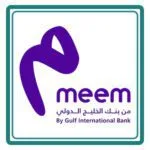





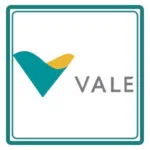

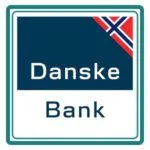



Implementation Methodology
PopularCert executed a phased implementation over 16 weeks:
Phase 1: Diagnostic & Planning (Weeks 1-4)
Key Activities:
- Comprehensive gap analysis against ISO 45001 clauses 4-10
- Facility-wide Hazard Identification and Risk Assessment (HIRA)
- Stakeholder interviews with all management levels
- Prioritization matrix for corrective actions
Deliverables:
- Detailed gap report with risk scoring
- Implementation roadmap
- Document control framework
Phase 2: System Development (Weeks 5-9)
Core Components Developed:
- OH&S Policy Manual
- Context analysis
- Roles and responsibilities
- Objectives and targets
- Operational Controls
- 12 Safe Work Method Statements
- PPE compliance program
- Contractor safety requirements
- Emergency Preparedness
- Site-specific response plans
- ERT training curriculum
- Drill schedule
- Performance Evaluation
- Internal audit protocol
- Incident investigation procedure
- Management review template
Technical Innovations:
- Cloud-based document management system
- Mobile-friendly digital checklists
- Visual work instructions for key tasks
Phase 3: Workforce Engagement (Weeks 10-12)
Training Program Highlights:
- 8 modular training sessions covering:
- Hazard identification (HIRA methodology)
- PPE selection and maintenance
- Emergency response roles
- Incident reporting protocols
- Bilingual materials (Arabic/English)
- Competency assessments
Behavioural Safety Initiatives:
- Safety observation program
- Near-miss reporting incentives
- Cross-functional safety committee
Phase 4: Certification Readiness (Weeks 13-16)
Certification Preparation:
- Stage 1 documentation review
- Stage 2 audit simulation
- Management review workshop
- Corrective action tracking
Key Technical Interventions
Dynamic Risk Management
- Implemented 5×5 risk matrix (Severity × Likelihood)
- Established risk treatment hierarchy:
- Elimination
- Engineering controls
- Administrative controls
- PPE
- Monthly risk review meetings
Workshop Safety Enhancements
- Machine guarding implementation
- Electrical safety upgrades
- Chemical storage reorganization
- Ergonomic workstation redesign
Operational Integration
- Embedded safety in maintenance workflows
- Linked OH&S indicators to operational KPIs
- Digital integration with existing systems
Quantifiable Outcomes
The implementation delivered measurable improvements across all OH&S dimensions:
Risk Reduction
- 62% decrease in uncontrolled risks
- 100% of high-severity hazards mitigated
- 40% improvement in audit scores
Operational Efficiency
- 30% reduction in safety-related downtime
- Standardized processes across 3 facilities
- 25% faster incident resolution
Certification Success
- Zero major non-conformities in certification audit
- Achieved ISO 45001 certification in 4 months
- Compliant with Saudi OHS regulations
Cultural Transformation
- 85% workforce training completion
- 12 near-miss reports in first month
- Management safety walks institutionalized
Client Value Proposition
This implementation created multiple business benefits:
- Risk Mitigation
- Reduced potential for serious incidents
- Lower insurance premiums
- Decreased regulatory exposure
- Operational Excellence
- Smoother maintenance workflows
- Better resource allocation
- Data-driven decision making
- Commercial Advantages
- Qualified for new tender opportunities
- Enhanced corporate reputation
- Competitive differentiation
Lessons for the Industry
This engagement yielded several insights applicable to similar organizations:
- Management Commitment is the single biggest success factor
- Simple, Visual Systems achieve better adoption than complex manuals
- Digital Integration dramatically improves compliance tracking
- Frontline Engagement drives sustainable culture change
Conclusion
This case demonstrates how a structured approach to ISO 45001 implementation can transform safety management from a compliance exercise into a strategic advantage. By focusing on both technical systems and cultural change, PopularCert helped the client achieve:
- Immediate risk reduction
- Sustainable safety processes
- International certification
- Tangible business benefits
For organizations considering similar transformations, we recommend:
- Starting with an honest gap assessment
- Prioritizing high-impact risks first
- Engaging all employee levels
- Leveraging technology for sustainability
About PopularCert
PopularCert specializes in practical, results-oriented management system implementations. Our consultants combine deep technical expertise with hands-on industry experience to deliver measurable business improvements.
Contact Our Team Today to discuss how we can help your organization achieve its safety and certification goals while protecting your confidential operations.
GET A FREE CONSULTATION NOW
FAQ
What was the main goal of implementing ISO 45001 at the vehicle rental company?
To create a structured Occupational Health & Safety Management System (OHSMS) that reduces workplace injuries, improves driver and staff safety, and demonstrates compliance with Saudi regulatory expectations.
What were the key steps taken during the ISO 45001 implementation?
Typical steps included a gap analysis, risk assessment for fleet operations and workshops, development of safety policies and procedures, staff training (drivers & technicians), implementation of controls (vehicle inspection, PPE, incident reporting), internal audits, and certification audit by an accredited body.
What measurable benefits did the company achieve after certification?
Common outcomes include fewer workplace incidents and near-misses, reduced insurance and downtime costs, improved driver/technician morale, stronger contractor management, and enhanced reputation with corporate clients and government tenders.
Can other vehicle rental companies in Saudi Arabia replicate these results?
Yes — with senior management commitment, investment in training and systems, and a phased approach tailored to fleet size and operations, other rental firms can adopt ISO 45001 and realize similar safety and business benefits.
